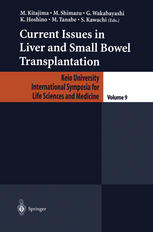

Most ebook files are in PDF format, so you can easily read them using various software such as Foxit Reader or directly on the Google Chrome browser.
Some ebook files are released by publishers in other formats such as .awz, .mobi, .epub, .fb2, etc. You may need to install specific software to read these formats on mobile/PC, such as Calibre.
Please read the tutorial at this link: https://ebookbell.com/faq
We offer FREE conversion to the popular formats you request; however, this may take some time. Therefore, right after payment, please email us, and we will try to provide the service as quickly as possible.
For some exceptional file formats or broken links (if any), please refrain from opening any disputes. Instead, email us first, and we will try to assist within a maximum of 6 hours.
EbookBell Team

4.7
106 reviewsIn Japan, cadaveric donor liver transplantation is not common even though cadaveric organ transplantation was legally established in 1998. In contrast, the number of living donor liver transplantations is increasing, with more than 1700 cases at 43 Japanese institutes by November 2001. Indications for and have become living donor liver transplantation are widening in Japan similar to those for cadaveric donor liver transplantation in the United States and Europe. At the same time, split liver transplantation from cadaveric donors shares some technical aspects with living donor liver transplantation. Remarkable progress has been reported recently, and thus it was an auspicious time to hold a symposium on "Current issues in liver/small bowel transplantation" in Japan. We were honored to hold a very fruitful symposium sponsored by the Keio University Medical Science Fund and to bring together top-rank transplant surgeons from Japan and other countries. It was a productive and rewarding time for all participants. We were able to share our experience through excellent presentations followed by active discussions and insightful com ments. At the symposium, we focused on current issues in liver transplanta tion such as widening indications for viral hepatitis and malignant tumors. We also discussed technical aspects and physiological problems in split/iiving donor liver transplant, novel strategies in immunosuppression, and the current status and future prospects in small bowel transplantation. This book contains the papers from all the distinguished guest speakers, focusing on the topics discussed at the symposium.